Oh man…where to even begin today?
Right off the bat, welcome to Dear Azami! For those of you just tuning in for the first time, thanks for dropping in. I truly hope you enjoy what
you find within these pages week after week. We love what we do, and we hope you do as well.
Now, for those of you who read regularly, there are bound to be some serious questions today, and I’m going to answer at least one with a bit of a
bombshell. Stay tuned.
First off, though, we just passed a wonderful milestone with this column. For those of you who tuned in last week, we hit the 200th installment of Dear Azami! We love
celebrating milestones here, and we like to do so by inviting in special guests to take the driver’s seat for a day. When we hit #100, we were able to
secure the services of StarCityGames’ own Sheldon Menery – the ‘Godfather’ of Commander and a reigning member of the Commander Rules Committee.
And last week, Patrick Chapin dropped in to handle #200 with his take on Dragonlord Silumgar.
First, a format founder and guiding hand. And now, a Hall of Famer and one of the most brilliant Magic minds in the game. I honestly don’t have any idea
where we’re going to go from here when #300 rolls around. (I wonder if the President plays Magic?)
So then…what else is new?
Well, I’m back, for one. And Sean?
Yeah…about that…
It’s been nearly a year since my words have graced (well, ‘have graced’ is a bit strong…maybe ‘have been tossed up on?’) these pages. There’s a decent
backstory involved, but I won’t bore you with the details of where I disappeared to when I took leave. Fortunately, Dear Azami was legitimately
graced with the addition of Jess as my permanent replacement, and she has since filled my shoes, realized they were pretty ratty and tossed them out, and
then filled an entirely new and far nicer pair.
Jess, it’s been great reading your words, both here and also over on Command of Etiquette. It’s going to very exciting to have the opportunity to work with
you.
And the reason I get to do that is…well, again, there’s a story, but the long and the short of it is that things move in cycles. I left, Jess took over.
And now, Sean is leaving, and I’m stepping back in to fill his shoes.
I know that many of you reading his Phelddagrif article a few weeks back had no
clue that you were reading the last regularly-scheduled Dear Azami installment Sean would write. You see, Sean is not big on goodbyes, and with
the upcoming bicentennial of the series, he didn’t want to take away from the awesome things that were planned. (Seriously…Patrick Chapin? Come on,
people…that’s so awesome!)
Now, I certainly doubt that you won’t hear from him again. Sean has so many irons in the fire that he needed to take some time to focus his attention on
some different aspects of his life, and I’m here to fill the gap as he graciously steps aside. As he told me in discussions about this, Dear Azami
was never “his baby”; he created it with the thought that it would become bigger than he was and that it would easily transition from writer to writer over
the years. Different voices telling the same cool story as it were. So with that, Sean, I offer you my sincere thanks, both for giving me a shot years ago
to co-helm the series, and then for another shot today, and finally, for creating this thing to begin with. I know you’ll be dropping by in the future from
time to time, so this isn’t truly a goodbye.
Good luck with everything you do, Sean. We’ll be watching. I hope that I can start to even approach doing you justice.
…Okay, with that done, let’s get on with the show, shall we?
I’ve been playing Grixis since I jumped into the format. Over the years I have come to settle on Mishra, Artificer Prodigy for the uniqueness and flavor he
brings to the table. I use cards like Possibility Storm to take advantage of his ability, and it plays a bit like Stax. But throughout my last couple
months of the format, I have found some cards that are almost always underwhelming.
Cephalid Shrine (“uncounterable” artifacts)
Support:
Artifacts:
Card Advantage:
Good Stuff:
Lands:
5 Swamp
5 Island
5 Mountain
The Problem Cards:
Portcullis (shuts down my Welder/Battlesphere generator)
I’ve considered running Smokestack to keep with the Stax feel, but I don’t know if Welder/Battlesphere is enough of a generator to make Smokestack useful
in Commander. As for my budget, you can probably tell I’m willing to splurge for this. 🙂
Thank you in advance!
-Zach
I figured that my first day back on the job would be an homage to my departed compatriot, as well as a look under the hood of the stranger side of the
format we love.
You see, for long-time fans of Dear Azami, this isn’t the first look at Mishra, Artificer Prodigy as a commander. Sean was challenged way back in #104 by
a reader to see what he could do to exploit the interaction Mishra and Possibility Storm share, and he came up with a pretty fantastic take on things. (In
fact, this is required reading. Go on…I’ll wait.)
I’ve actually been playing a Mishra deck for a few months now, on suggestion from Sean Patchen (@SwordsToPlow), my co-writer over at GeneralDamageControl.com. He’s written a really good explanation of what the deck can do as well,
and he takes it in a different direction than Sean (er…Star City Sean. This is getting confusing.) did in his article. Again, highly recommended reading.
Now, for those of you who haven’t seen this combo in motion, here’s the rough explanation:
-With both Mishra and Possibility Storm in play, play an artifact. Both Mishra and Possibility Storm will trigger.
-Place Mishra’s trigger on the stack first, followed by the Possibility Storm trigger.
-The enchantment trigger resolves first. Exile the card you just tried to play, and then start revealing cards off of the top of your library until you
find another artifact. You then cast that one instead without having to pay the mana cost. The original artifact and all of the other cards you revealed
are then put on the bottom of your library in random order.
-Mishra’s trigger then resolves, and you get to search your graveyard, hand, and library for a card that shares a name with the original card. Since that
card is now in your library, you then get to go find it and put it into play.
That’s solid value in any book, but there are a lot of other things happening that aren’t immediately noticeable. The first and obvious one is the
one-sided effect that Possibility Storm now has on the game. Mishra simply takes the drawback and not only nullifies it, but makes it into true card
advantage.
Past that, it not only allows you to continue forward with your regularly-scheduled gameplan, but it makes it an unbelievable hassle for other players to
deal with anything correctly. I’ve played a bunch of games with a build of this deck, and most of them literally involve Possibility Storm hitting play and
staying there until the end of the game. As a standalone card, it’s amazing disruption, because it attacks an angle that very few people are ready for.
People play Austere Command and Woodfall Primus and Reclamation Sage, but not many play Viridian Zealot or Qasali Pridemage – and even if they do, it had
better come down before Possibility Storm itself, or it won’t matter anyway. Sure, there’s the potential of getting one of the
ETB-trigger-enchantment-removing creatures from the Possibility Storm trigger, but it’s no guarantee.
And here’s the real rub – I’ve also never played a game where I got Possibility Storm into play, and the rest of the table didn’t erupt into smiles,
instantly having a blast with the ‘sub-game’ of random things and wild attempts to deal with the card that ensued.
You’re not genuinely telling people they can’t play the game – you’re telling them to play a different game altogether. So far, no one is complaining at
all.
Looking past all of this, the intangibles of the deck itself have a ton of cool little bonuses built in; for instance, just having Mishra, Artificer
Prodigy in play without any other effects grants you a look through your deck and a free shuffle every time you play an artifact. And you occasionally can
catch someone with an itchy trigger finger who will try to counter your artifact without letting the Mishra trigger resolve first, in which case it will
head to the yard and then come right back. Or, as Zach intimated above with the addition of Blood Funnel, having your own counter effects make your
artifacts effectively uncounterable through the same means since you control the stack and can get the ball rolling and force your opponents’
hands before the trigger resolves.
Long story short, Mishra is far from being a useless commander option even in a vacuum. He’s got some really cool tricks up his sleeves.
Let’s dig in…but first, Zach, you should be warned. As Sean and Jess can both tell you, it’s usually a big mistake to use the words “I’m willing to
splurge” in a submission to me. Just saying.
Synergy
First, let’s discuss some of the things that we’ll be doing to ratchet up the synergy with the commander. From the top section, let’s look a little closer
at Cephalid Shrine and Blood Funnel; both represent a permanent-based passive counter effect, which this deck thrives off of. Again, with Mishra in play,
any counterspell effect that doesn’t either tuck the target (Despite what you may have heard, Hinder and Spell Crumple are still good in this format, and
as it turns out, it’s because you can target things that aren’t opposing commanders. Who knew?) or exile it outright. (I don’t always play counterspells,
but when I do, I play Dissipate. Or occasionally Faerie Trickery.)
Cephalid Shrine gets the job done quickly and simply. Even if X is equal to zero, you still can opt not to pay it. You also get the added bonus of
potentially punishing players who play too many staples (“Weird…there’s a Sol Ring in everyone’s graveyard…wanna pay five for that instead?”), or you at
least get another blue enchantment that annoys people as much as Rhystic Study. (“How much are you paying for that spell? Yeah, I know X is equal to
zero…”)
Blood Funnel is a little cooler. While it doesn’t help you get a two-for-one off of artifact creatures, it gives you a discount off of all of your
non-creature artifacts, and tacks on a sacrifice outlet should you need one as well. Tons of different lines of play open up under this card.
Let’s add a few more cards to this functional portion of the deck.
In:

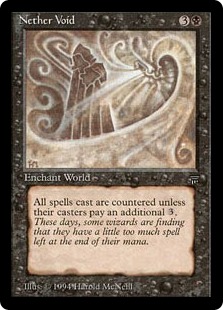

Might as well get the big-dollar stuff going sooner rather than later, right?
Nullstone Gargoyle is a great option for the deck. You’re not going to be chaining any multiple-artifact turns together with it alone, but it does a great
job of still providing you the effect you want while also being strapped to an evasive creature with some decent stats that will Possibility Storm-up as
well. It’s also important to note that due to the one-sided nature of Possibility Storm, Nullstone makes it that much harder for your opponents to actually
aim non-creature removal at it. They’ll need to resolve another non-creature spell first, deal with the chaos, and then figure out how to play the removal
spell from under Possibility Storm. Good luck with that.
And the original bank-breaker itself…Nether Void. This is essentially just Cephalid Shrine but way better. (Well, unless you’re looking at your bank
statement, that is…) Long-time readers know that I’m a huge sucker for playing old, out-of-print Reserve List cards to begin with, and I’m just a firm
believer in general of mining the entire history of the game to break out new gems that will turn your local playgroups inside-out in sheer surprise.
I can’t say this enough – you just can’t go wrong with any permanent-based counterspell source for this deck. Possibility Storm does a great job of
protecting itself, and adding another layer of defense is cheap insurance. Free Mana Leaks for everyone!
Out:
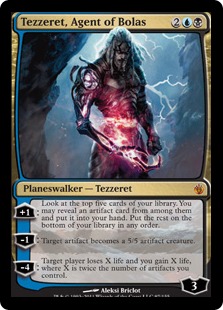
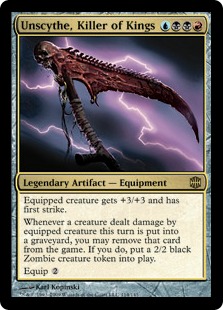

The trick with Possibility Storm is that even when you don’t have Mishra in play, you still want to make your deck redundant enough that spinning the wheel
isn’t a total coin-flip. For this reason, it’s a no-no to have a card type that isn’t represented by multiple cards in the deck. You’ve got several
planeswalkers in here, but the two that you really want are Daretti, Scrap Savant and Tezzeret the Seeker. Daretti is an unbelievable workhorse in the
deck, playing the Goblin Welder role while also filling the yard with juicy targets (and if you manage to land the ultimate, the rest of the table is
flat-out doomed.) Tezzeret 1.0 is a tutor, easy acceleration with all the mana rocks in the deck, and a sweet win condition all in one tidy package.
Tezzeret 2.0, on the other hand, is just a fairly weak blend of the two. Sure, the ultimate is easy to hit, but it’s rare that it’ll be allowed to do much
damage, and while digging five cards deep a turn is great, the total package just isn’t as good as the cards we’re replacing it with.
(And yeah…I know there are more planeswalkers in the list. For now, anyway…)
Unscythe seems like it’s a nod toward the space Cranial Plating is taking up, and it has a pretty strong exile-and-get-a-free-guy clause as well. The thing
is, there are better ways to win, and certainly better ways to both remove other creatures and make tokens for the Smokestack that you want to slot. Out it
goes.
(Not so) Good Stuff
You get out of Commander what you put into it. It’s a format that is as much about personal expression as it is about winning. To that end, I
wholeheartedly support playing whatever cards you want to, regardless of how “good-stuffy” they might be. Personally, I try to steer clear of the
low-hanging fruit of the format simply because I find it far more interesting to watch someone try to figure out what the heck my Ice Cauldron actually
does, rather than watch a table full of players simultaneously check their phones when I resolve Tooth and Nail.
(It’s possible I play with a tough crowd as well.)
In any case, the point is that you should play what inspires you, even if they’re good stuff inclusions.
That said, let’s cut your good stuff inclusions.
Out:
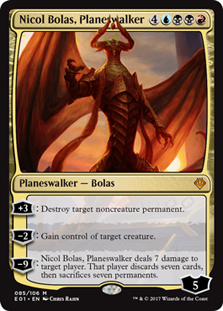
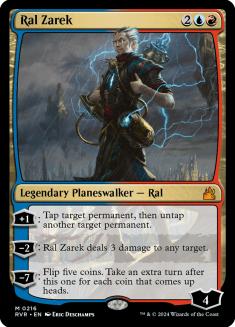
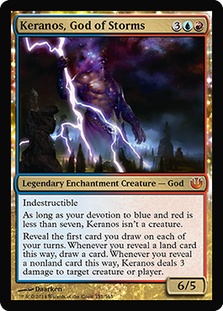
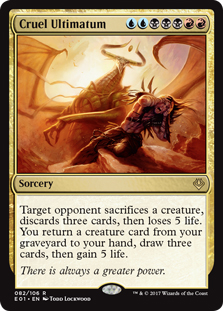
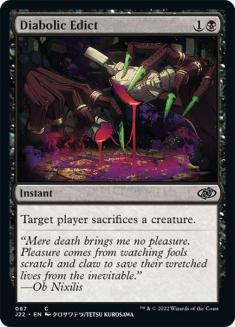

There’s something that comes over people quite a bit of the time when they start to sleeve up a Grixis deck; it’s like the raw evil of the color
combination calls out, begging its users to step over to the dark side. Believe me – I get it. But I think in this case, improved deck synergy wins out
over the ability to cackle gleefully whilst twisting your mustache and tying some poor heroine to the train tracks somewhere.
Well, mostly anyway.
Nicol Bolas, Planeswalker is the first to go. Honestly, both his +3 ability and his -2 ability are not all that terrible, especially in the same package.
However, this is Commander, and you won’t often be ticking him up to run out his ultimate, because the fear of that in your co-players makes this a kill on
sight – and you become a big target as well. Besides, you can do better for cheaper.
For the same reason, Cruel Ultimatum is coming out too. Your mileage may vary, but in my book, it’s just a feel-bad card that costs way too much for the
effect, considering the hate it attracts. True story – my friend and co-blogger Mr.P was responsible for breaking me of playing this card. The first time I
aimed at him, we were a good forty-five minutes into an otherwise-fun game. It totally blew him out, and he spent two turns drawing lands before just
scooping.
I felt really bad. Then, a few games later, I did it to him again. It was a very-poorly received play. I eventually smartened up.
Diabolic Edict! What is there to say about it other than…I guess your metagame is filled up with indestructible and/or hexproof creatures? It feels a bit
soft here, and we need to fill some additional holes in your deck anyway – preferably with something that does a little more.
Keranos is basically a Lightning Bolt each turn that might eventually become important enough to be a six-power attacker with no evasion. If you were
drawing more lands, I’d be a little more excited, because Keranos seems better when he’s playing the personal Howling Mine role. However, I’ve just noted
that you seem to have misplaced a land or two somewhere along the way, because I only count thirty-five. Even with all the mana rocks, this is still very
scary; I wouldn’t necessarily call this a ‘big mana’ deck, but it wants to keep up with the Joneses in the mana development department to stay making plays
from a slightly-higher-than-average mana curve. I need to see a few more pieces of real estate in this list before I’m happy letting it run free.
Finally, Ral Zarek. I’m not sure where this card actually falls; it’s not particularly ‘good stuff’; it’s more like ‘meh…it’s okay’ stuff. I’ll be honest –
I thought this was an okay include at first, because Faithless Looting and stealing artifacts is just what this deck wants to be doing to keep moving.
Then, I remembered that there are two Izzet planeswalkers these days.
In:
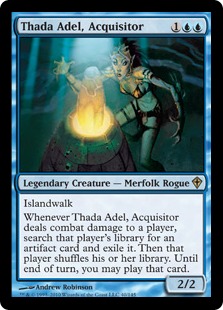
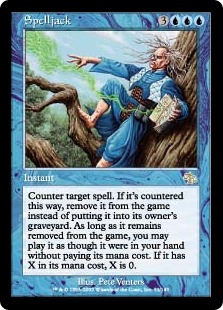
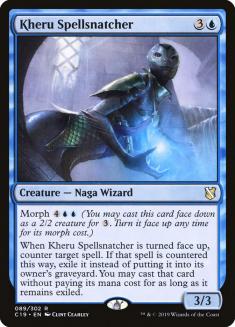
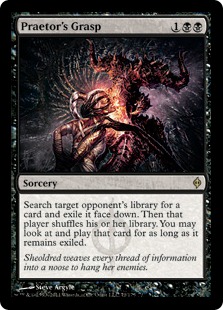
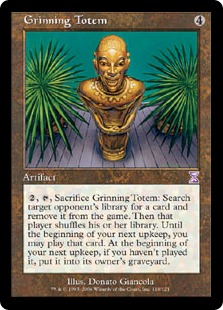

This is the “Fun with Mishra” package. The way that Mishra is worded reads that his ability triggers whenever you cast an artifact spell.
It doesn’t have to be yours, and it doesn’t need to come from your hand.
This is the other side of your commander; without Possibility Storm in play, you do lose some pretty sweet functionality and card advantage, but it’s still
possible to make the most of Mishra in other ways. I decided to see what I could do to explore this side of things a bit more to make sure that you’re
still seeing some benefit even if you can’t manage to find both sides of your main combo.
Thada Adel is a fantastic commander candidate on her own. I mean, Island is the best card in the game and all from what I’ve read, so she’ll have no
trouble getting in for damage and a nice triggered ability. You still need to pay retail for what you take (she’s not called Thada Adel, Dirty Thief after
all…), but you’re bound to find some format staples like Sol Ring and Solemn Simulacrum floating around that will still let you get in on the two-for-one
deal.
Praetor’s Grasp is going to let you do the same thing with artifacts you find, albeit with some added functionality in the process. In a pinch, Grasp reads
“Exile that guy’s Hermit Druid so that he can’t combo off.” That seems worthy of the interaction. In addition, it’s a great way to bolster the deck with
some added card draw or removal as well if you have the need; head over to the guy playing Dimir colors for a Damnation to clear the board, or a quick
Tidings to refill your hand if the need arises.
Grinning Totem is Praetor’s Grasp with a timer attached. The window to cast the card you find is smaller, and you run the risk of having to give it back.
However, this is an artifact and can thus be Possibility Storm-ed into existence, so it gets the slot.
Rounding out this section is Spelljack and Spelljack stapled to a Naga Wizard. Both cards are going to gain you a little extra counterspell protection, and
everything said above about Praetor’s Grasp is true too – with the benefit of not needing to pay the mana. It’s unlikely that you’re going to be grabbing
something that will let you double up with Mishra (since you’ll probably be saying no to removal with these two cards), but it isn’t unheard of, and the
trade-off from the other cards in this section is that you can now get in on white and green cards as well.
Problem Children
Let’s just get this out of the way.
Out:

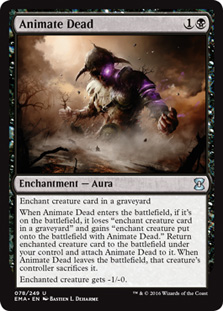
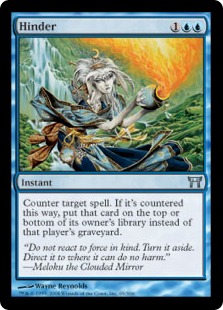
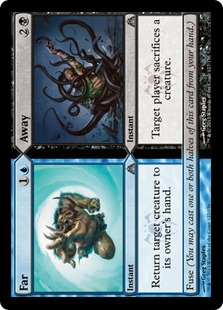
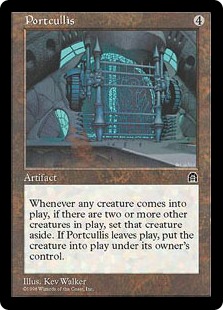
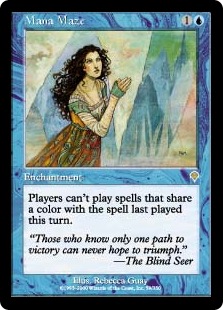
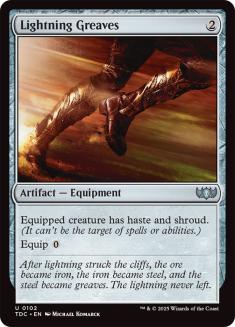

I’m not opposed to cutting any of these, as none particularly look like strong performers, and some actually fly in the face of your gameplan, as you
mentioned. More importantly, though, you’re not happy with them either, and I’m a big believer in going with your gut in this format. If you don’t
like playing a card, you simply won’t – and that’s a wasted slot.
Brainstorm is never a bad card, but the power level seems quite a bit lower in Commander than in other formats. In this deck, I’d rather run Faithless
Looting, and I didn’t even slot that.
Animate Dead is…well, kind of like Ral Zarek above. It doesn’t seem great alone (I’d much rather gain the instant-speed utility of Necromancy or the raw
power of Fated Return for straight usage), and it doesn’t seem to really fit the deck. Maybe I’m missing a combo in here somewhere…
Far // Away seems a little out of sorts as well, although it’s worth noting that, again, you’re in on sacrifice effects. I really would love to see what
your metagame is like at this point. This makes me really curious.
Hinder is honestly not something that I necessarily want to cut; it’s a great card regardless of what the tuck rule changes say. Still, we upgraded to
Mishra-friendly counterspells above, so I’m fine letting this go.
Portcullis you nailed. I don’t have much more to say here, and I’m about to add more token producers that would make the problem worse anyway.
And Mana Maze…wow. I haven’t seen this card in a really long time. I don’t really remember much of it in play, other than the sneaking suspicion that I was
really annoyed with it when I encountered it. I know that you’re heading in a Stax-ish direction here, and this isn’t a terrible include for that sort of
deck. However, it seems like a card that will just irritate people, and that’s not the kind of attention you want to draw.
It is interesting to note that Mana Maze has an interesting interaction with Possibility Storm that isn’t necessarily favorable; if you play a spell with a
color identity (read: not a colorless artifact), you run the risk of not being able to play the card that comes up from the Possibility Storm trigger if it
shares a color with the original spell. (Of course, that also works like that for your opponents, who are likely not playing as many artifacts, so this
might be better than I thought. Still – irritating.)
Oh – I slipped Lightning Greaves in there too. You’ll see why in a minute.
In:

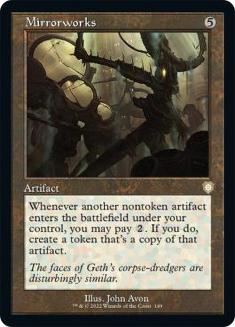
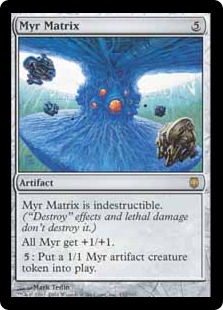
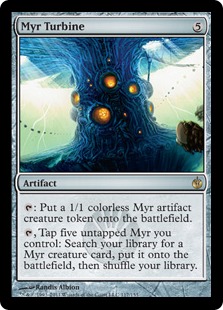
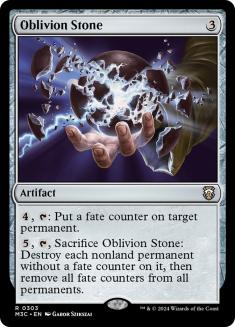
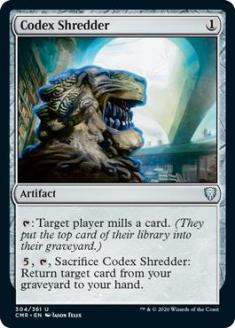
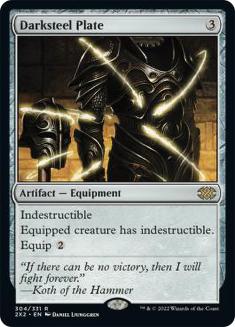

I’m not personally proud of it, but I’m giving you your Smokestack. While this is less annoying than Mana Maze is, it’s still a little bit oppressive. I’ve
grown a little tired of Grave Pact effects as of late simply because they tend to encourage people to stop playing creatures and slow games to creeping
(and often kind of boring) halts. Smokestack tends to be Grave Pact on steroids; the person playing it knows how to reap the benefits, and the rest of the
players can’t even save their creatures for after it leaves play because it will just shrug and start eating lands instead.
Still…you asked for it, so you got it.
Myr Matrix and Myr Turbine are like-minded includes. Both will increase your Myr count, which makes it easier to abuse your Smokestack. On top of that,
they make Myr Battlesphere both easier to find and also a far stronger win condition. My problem with cards like this are that I’m impatient and hate
paying retail for things that don’t immediately explode with value.
With this deck, though, that’s not exactly a problem; your commander will make them a much stronger proposition when they’re, you know, free.
Mirrorworks is one of those cards that everyone understands is super-powerful, and yet it seems criminally-overlooked and under-played. This is again a
card that feels better when it’s free, and believe me – once you play an artifact, get a free bonus artifact from Possibility Storm, tap two mana to clone
it, get the original artifact back from Mishra, and then tap two more mana to clone that, you’ll be sold for life on this card.
Oblivion Stone is the removal spell I’d rather see than Diabolic Edict and the other sacrificers. It’s again a tutorable card with all of the different
ways your deck can make that happen, and it’s still one of the best board wipes in existence. They’re getting pricey as time goes by, but I still find them
well-worth the money for decks that don’t have the ability to deal with a specific permanent type (and Grixis is soft to enchantments.)
Colorless Regrowth! Codex Shredder – because a little extra recursion never hurts, and Trinket Mage can find it. Besides, you haven’t lived until you drop
this the turn after someone else at the table plays Oracle of Mul Daya.
And finally, Darksteel Plate. You lose a slight combat edge without the haste of Greaves, but this deck wants to toss Mishra down and have no one mess with
him more than anything. Indestructible does a better job of that than shroud in my opinion.
Mana Considerations
Again, Zach – 35 lands is Danger Zone territory. I appreciate that this deck is chock-full of mana rocks, but consider this: Your optimal line of play
probably involves Mishra on turn 4 and Possibility Storm on turn 5. That means finding exactly one blue, one black, and two red mana sources to get the job
done. Since green is not one of these colors, and since people play board sweepers, and also because excessive mulligans mean less time you’re
actually playing, I want to beef up this area.
Out:
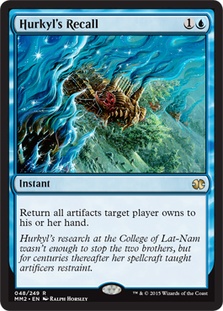
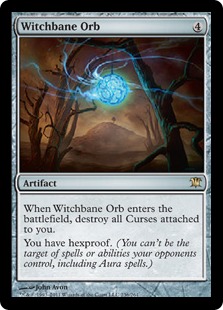
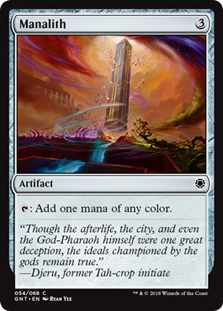
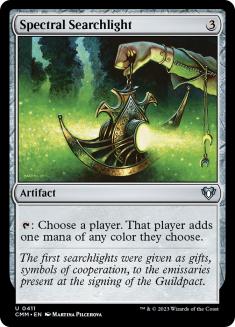

The quick-and-dirty is that I already had my swaps in place when I realized the land count issue; back in the day, the lands would be my first point of
focus, so I guess I’ll chalk it up to rust.
I had to choose from a pretty tight list at this point, so I went for cuts that didn’t particularly indicate that they’d be all that missed functionally or
that would see direct upgrades.
Hurkyl’s Recall seems like a decent emergency parachute in the face of mass-removal, but otherwise, it may end up clogging your hand once things get
moving.
Witchbane Orb is a judgment call based on unfamiliarity with the metagame; you may have a ton of graveyard hate floating around that you want to dodge, or
there may be some mad scientist that runs a direct-damage list. If either are true, my apologies. (And find a place to slot it back in!)
Manalith is great and all, but there’s a strictly-better upgrade that’s not in your list.
Spectral Searchlight was awesome in Standard back when it was a win condition and mana burn still existed! In this deck, though, I’d rather forgo
the opportunity to play small-scale politics by donating mana around, and instead just have a land to drop for free.
In:
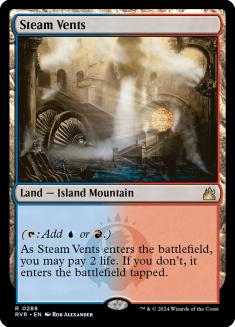
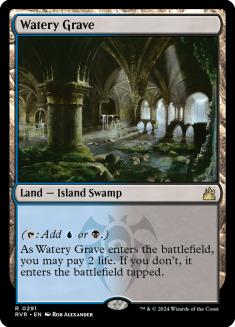
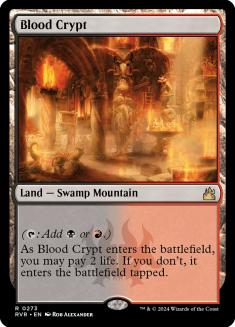
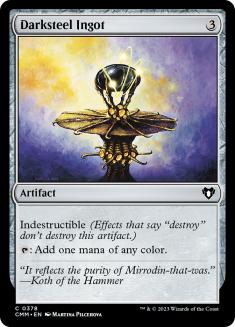

No surprises here. You have the correct Revised dual lands and the right fetchlands as well. I thought it was a good opportunity to add the shocklands to
the mix to close the gap to a much-safer 38 lands.
And Darksteel Ingot adds indestructible to your Manalith at no additional cost. No-brainer.
Here you go, Zach:
Creatures (17)
- 1 Solemn Simulacrum
- 1 Goblin Welder
- 1 Vedalken Archmage
- 1 Trinket Mage
- 1 Vedalken Engineer
- 1 Nullstone Gargoyle
- 1 Mishra, Artificer Prodigy
- 1 Etherium Sculptor
- 1 Thada Adel, Acquisitor
- 1 Wurmcoil Engine
- 1 Steel Hellkite
- 1 Myr Battlesphere
- 1 Hoard-Smelter Dragon
- 1 Treasure Mage
- 1 Bloodgift Demon
- 1 Hellkite Tyrant
- 1 Kheru Spellsnatcher
Planeswalkers (2)
Lands (38)
- 1 Strip Mine
- 1 Reflecting Pool
- 5 Swamp
- 5 Mountain
- 5 Island
- 1 Volcanic Island
- 1 Underground Sea
- 1 Badlands
- 1 Crosis's Catacombs
- 1 Polluted Delta
- 1 Bloodstained Mire
- 1 Temple of the False God
- 1 Vault of Whispers
- 1 Seat of the Synod
- 1 Great Furnace
- 1 Mishra's Workshop
- 1 Watery Grave
- 1 Steam Vents
- 1 Blood Crypt
- 1 Urborg, Tomb of Yawgmoth
- 1 River of Tears
- 1 Crumbling Necropolis
- 1 Scalding Tarn
- 1 Tectonic Edge
- 1 Evolving Wilds
- 1 Command Tower
Spells (43)
- 1 Sensei's Divining Top
- 1 Scroll Rack
- 1 Sol Ring
- 1 Demonic Tutor
- 1 Ancient Craving
- 1 Nether Void
- 1 Darksteel Ingot
- 1 Darksteel Forge
- 1 Grinning Totem
- 1 Myr Matrix
- 1 Mycosynth Lattice
- 1 Smokestack
- 1 Oblivion Stone
- 1 Mindslaver
- 1 Fabricate
- 1 Phyrexian Arena
- 1 Lim-Dul's Vault
- 1 Possessed Portal
- 1 Cranial Plating
- 1 Thoughtcast
- 1 Thran Dynamo
- 1 Fact or Fiction
- 1 Cephalid Shrine
- 1 Spelljack
- 1 Blood Funnel
- 1 Dimir Signet
- 1 Izzet Signet
- 1 Rakdos Signet
- 1 Coalition Relic
- 1 Ward of Bones
- 1 Obelisk of Grixis
- 1 Relic of Progenitus
- 1 Elixir of Immortality
- 1 Nihil Spellbomb
- 1 Spine of Ish Sah
- 1 Myr Turbine
- 1 Darksteel Plate
- 1 Mirrorworks
- 1 Praetor's Grasp
- 1 Batterskull
- 1 Staff of Nin
- 1 Codex Shredder
- 1 Possibility Storm

Against my personal better judgment, I’m giving you the Smokestack you want so badly, as well as some extra ways to exploit the advantage that it can
bring. As luck would have it, some of those actually make your Myr Battlesphere win condition quite a bit better as well. Seems good.
You get some extra lands, so that I’m not quite so terrified of your manabase, and you get some extra ways to take advantage of your commander, as well as
the interaction between him and Possibility Storm that forms the basis of this deck. I think you’ll enjoy the extra focus on your theme and your new toys
to boot.
Now then…let’s talk cost.
| CARD: | PRICE: |
| Codex Shredder | $0.25 |
| Darksteel Ingot | $0.29 |
| Grinning Totem | $0.29 |
| Kheru Spellsnatcher | $0.49 |
| Nullstone Gargoyle | $0.49 |
| Thada Adel, Acquisitor | $0.49 |
| Praetor’s Grasp | $0.59 |
| Myr Turbine | $1.15 |
| Mirrorworks | $1.75 |
| Spelljack | $2.89 |
| Myr Matrix | $2.99 |
| Smokestack | $4.99 |
| Darksteel Plate | $7.85 |
| Blood Crypt | $8.05 |
| Watery Grave | $10.79 |
| Steam Vents | $13.35 |
| Oblivion Stone | $14.05 |
| Nether Void | $199.99 |
The really shocking thing on this list? Darksteel Plate at $7.85! Amirite?
Well, the good news is that you also get $20 in store credit at StarCityGames.com for participating in this week’s Dear Azami, so that should
help. Well, a little bit, anyway. Realistically, the total bill – $269.75 – can be reduced by $199.99 if you chose to go the “life without Nether Void”
route. It’s a heck of an interaction, but it isn’t critical to the function of the deck. Further cutting back another $30-odd dollars will trim the
shocklands, which I still would strongly urge you to replace with other lands due to your stock land count. Mulligans only get you so far, after all.
Finally, here’s a short list of some of the things that I’d personally consider adding to the deck if it was mine and I had the space:
Guardian Beast – Read the card, then scratch your head a bit, and then go over to check the actual Oracle text. Combine with Mycosynth Lattice for a poor
man’s Avacyn, Angel of Hope (or at least one that doesn’t attack well and turns off with a well-timed Psychic Puppetry…)
Ice Cauldron – I mentioned this before. If you’re hungry, resolve this and Guardian Beast in the same turn. The time it takes everyone to read and
understand the pair will be more than enough to wander off in search of cheap take-out. On a serious note, though, it allows you to sidestep Possibility
Storm. Also, an artifact. This is synergy all day long.
Etherium-Horn Sorcerer – Cascade also dodges Possibility Storm. Just saying.
Closing Time
Well, it’s nice to be back. Thanks for the opportunity to share some tech on my current favorite Commander card, Zach. I appreciate it, and I hope you do
as well.
And once again, I’m looking forward to working with you to steer this column forward, Jess. Here’s to Sean, and to another 100 installments.
Want to submit a deck for consideration to Dear Azami? We’re always accepting deck submissions to consider for use in a future article, like Andre’s Zedruu the Greathearted deck or Owen’s Phelddagrif deck. Only one deck submission will be chosen per article, but being selected for the next edition of Dear Azami includes not just deck advice but also a $20 coupon to StarCityGames.com!
Email us a deck submission using this link here!
Like what you’ve seen? Feel free to explore more of Dear Azami here, in the Article Archives! Feel free to follow Sean on Facebook… sometimes there are extra surprises and bonus content to be found over on his Facebook Fan Page, as well as previews of the next week’s column at the end of the week!
And feel free to check Jess’s own Command of Etiquette column on Hipsters of the Coast for more Commander and casual content!
